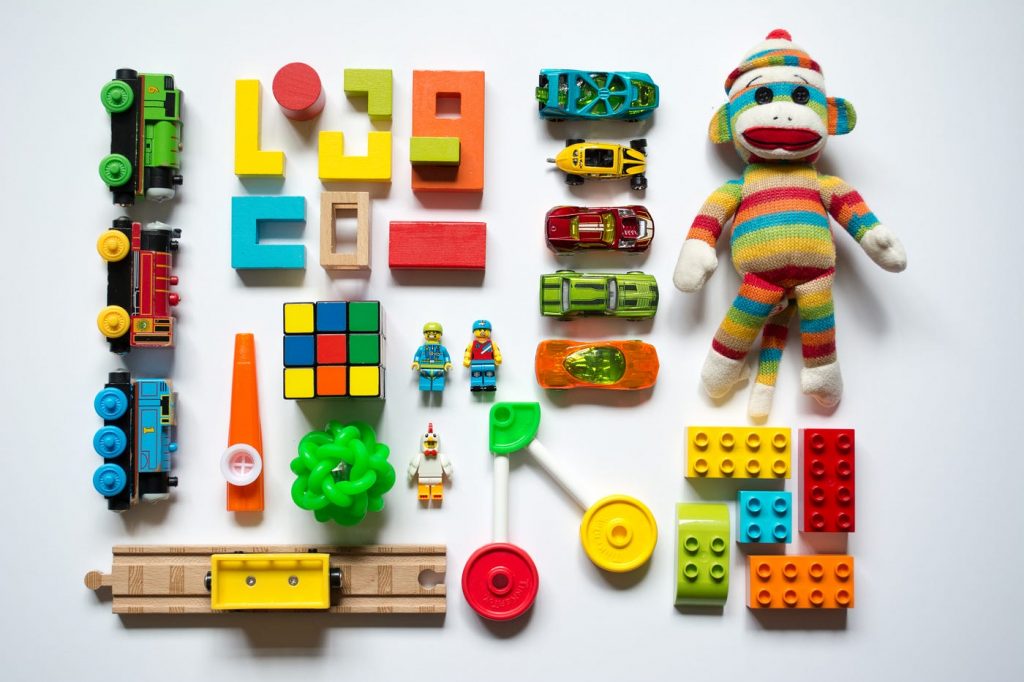Entrepreneurship is growing year by year, with many startups trying to enter the market. Some of them succeed due to their promising ideas, while others are doomed to fail from the very start. However, with every failure, entrepreneurs have the opportunity to learn and avoid repeating the same mistakes as others.
In this article, we’ll look at 11 Shark Tank failures that taught emerging startups important lessons. These failed Shark Tank deals helped us understand what works and what may not lead to success.
What Is Shark Tank?
Shark Tank is a popular American reality TV series with 15 seasons that first aired in 2009 on ABC. In the show, entrepreneurs present their ideas to a panel of investors called “sharks” who decide if the presented ideas have potential or not.
Sharks have helped numerous products to enter the market. Among them are the Sleep Styler, Bombas, and, of course, Scrubb Daddy — one of the favorite products of cleaning enthusiasts worldwide.
Still, some product ideas were not approved by the sharks due to various factors such as a lack of conviction, an unclear path to profitability, concerns about the scalability of the business, or perceived risks in marketing the entrepreneurs’ ability to execute their business plans successfully.
We’ll take a look at these Shark Tank failures in a little bit, now let’s analyze these factors that result in Shark Tank flops.
Lack of Conviction
The sharks often look for entrepreneurs who demonstrate confidence, competence, and passion for their business. If the entrepreneurs appear unsure, lack industry knowledge, or cannot effectively communicate their vision, it can erode the sharks’ confidence in the venture.
Unclear Path to Profitability
Sharks are typically interested in businesses with a clear and viable path to profitability. If entrepreneurs are unable to articulate how their product or service will generate consistent revenue and become financially sustainable, it can be a deterrent for the sharks.
Concerns About Scalability
Scalability is crucial for businesses looking for investment. If the sharks perceive that a business may struggle to scale its operations to meet increased demand or reach a broader market, they might hesitate to invest.
Perceived Risks in the Market
The sharks are aware of the overall market conditions and potential risks associated with a product or industry. If there are concerns about market saturation, changing consumer trends, or external factors that could negatively impact the business, the sharks may choose not to invest.
11 Worst Shark Tank Failures
We’ve handpicked eleven failed Shark Tank products. Let’s see what those products were, why they failed, and what lessons can be learned from these Shark Tank flops.
Amber: A Cell Phone Charging Station

What it was: Amber was a prototype for a cell phone charging station for public places. A user puts their phone in one of the empty compartments and locks it using a scan of their fingerprints. Their mobile phones charge automatically.
Why it failed: Amber is one of the major Shark Tank failures and is considered the shortest and worst pitch ever. The sharks were discouraged by the product and didn’t see a future in the business plan. One of the sharks, Barbara Corcoran, even said “why does anybody even need this? I think there’s so many charging devices and I’m in a space right now that creates things that are light years ahead of this.”
Lessons learned: Being one of the worst Shark Tank pitches, Amber’s case teaches us the importance of thoroughly analyzing and understanding market demands before launching a product.
The Netflix for Toys (ToyGaroo)

What it was: “The Netflix for Toys” is a subscription service designed for parents to conveniently rent toys for their kids every month and turned out to be among the worst Shark Tank failures. When your child gets tired of the current toys, you can simply send them back and order new ones. It’s supposedly a hassle-free way to keep your child entertained with a constant rotation of toys.
Why it failed: Toygaroo had problems getting enough toys and the costs of managing them were getting really high. The company was closely looked at, and everyone wanted it to grow. But to keep going, they needed more funding, which they couldn’t get.
Lessons learned: Toygaroo wanted to be the toy version of Netflix for parents and kids. They lacked funding and enough analytical skills to keep the business running.So, the lesson here is that a business needs enough resources, should watch its costs, and always have a plan B for procurement to keep things running smoothly.
The Body Jac

What it was: The Body Jac was designed as a push-up machine that would help you do the exercise right away, with the correct alignment, avoiding any injuries or muscle traumas. One of the sharks, Barbara Corcoran did invest in the product but little did she know that it was going to become one of the worst Shark Tank deals.
Why it failed: The story behind Body Jac’s demise is still unclear. The Body Jac website mysteriously shut down in 2012 and investor Barbara Corcoran has openly said she wished she hadn’t invested in the company in the first place.
Lessons learned: Keep things clear, check products out well, be ready to change, and talk straight when things go south in business.
Sweet Ballz

What it was: Sweet Ballz was a company that produced cake balls sold in convenience stores.
Why it failed: The reason Sweet Ballz didn’t work out is a common tale of the two founders having a big falling out. Right after the Shark Tank deal went well, they ended up in a lawsuit. McDonald, the original creator of SweetBallz, sued the other thinking he was secretly working on a similar product behind his back. And here’s how Sweet Ballz made history becoming one of the memorable Shark Tank failures and resulting in a big missed opportunity.
Lessons learned: This case teaches us to solve problems quickly, be honest with our business partners, and keep things professional to avoid missing out on big chances.
Breathometer

What it was: Breathometer was designed as a little gadget that used a phone app to check how much alcohol was in your blood. It was supposed to help people keep track of their drinking and make smarter choices about driving
Why it failed: The device was designed poorly and produced inaccurate results. It showed a low level of alcohol which was at times far below the real value. This defect itself is a hazard for users which could encourage tipsy drivers to start their car when in fact it was better not to. Breathometer is widely considered to be one of the worst Shark Tank failures.
Lessons learned: It’s super crucial for gadgets, especially ones about safety, to be dead-on accurate. Putting user safety first and dealing with possible issues early on in the making of a product are huge lessons to keep in mind to dodge big failures.
Doorbot

What it was: Doorbot was introduced as a smart doorbell — the first ever video doorbot built for smartphones. With the doorbot, you could see and speak with visitors from anywhere. It was also designed to add security to your home. It, however, was doomed to fill the list of Shark Tank failures.
Why it failed: The reason Doorbot failed mostly on the part of investors rather than the creators. Investor Kevin O’Leary offered Siminoff (the founder) $700,000 in exchange for 5% equity and 10% royalty. But Siminoff turned down the deal. Later Amazon bought Doorbot for $1B and it is now a major company.
Lessons learned: Being among the biggest Shark Tank misses, the case of Doorbot teaches us a number of things. One, for example, is having clear non-negotiables and staying committed, which can lead to long-term success when you have a great idea and the ability to make it happen. Another takeaway is that you have to believe in what you are doing and never give up.
ShowNo Towels

What it was: ShowNo Towels was marketed as a towel shaped like a poncho, having an opening to stick your head out.
Why it failed: This product landed on our list of Shark Tank failures due to complications between Shelly Ehler and Lori Greiner. Disagreements on terms, failed partnerships, and ongoing tensions led to the business’s end, but Shelly later revived it, now focusing on the underserved market of people with disabilities.
Lessons learned: A major takeaway from this case is making sure that founders and investors work well together. This is extremely important for a startup to succeed. ShowNo Towels shows us how talking openly and agreeing on investment terms are really important for a business to do well.
HyConn

What it was: Quick and easy connectors for hoses to link up with fire hydrants.
Why it failed: Jeff Stroope, the founder, mentioned that one of the sharks, Mark Cuban, wanted to change the deal terms. Cuban proposed licensing the product to other companies, but Stroope felt this might lead to him losing control of the company, so he said no to the deal.
Lessons learned: The HyConn case stands out as a significant lesson from Shark Tank. It emphasizes the importance of clear communication with investors to prevent misunderstandings. Jeff Stroope’s decision to decline a deal stemmed from his concern about potentially relinquishing control of the company, highlighting the need for caution when considering agreements that could affect our level of control.
Foot Fairy

What it was: Foot Fairy was marketed as an iPad app designed for measuring children’s foot sizes.
Why it failed: The app that was built for Foot Fairy was buggy and didn’t capture commission payments. The founders did not earn any money for their ideas at the end. Foot Fairy shut down after six months following their Shark Tank episode.
Lessons learned: Quality determines success. This failed Shark Tank teaches to ensure your product works well. Reliable payment systems and a sustainable business model are essential for avoiding financial troubles and achieving long-term success.
HillBilly Brand

What it was: HillBilly Brand made country clothing, hats, accessories and more.
Why it failed: The founders sought a small investment of $50k. However, they did not get what they were looking for and ended up selling the whole company to three of the Sharks in exchange for $75k and 7% royalties.
Lessons learned: HillBilly Brand is one of the worst Shark Tank failures which teaches founders the importance of clear negotiations and understanding the terms of a deal. Seeking a small investment, but ending up giving away the whole company with royalties is not actually a great deal. Another takeaway is that entrepreneurs need to be cautious about the deals they accept and to ensure they match their initial goals.
Coffee Meets Bagel

What it was: Coffee Meets Bagel is a dating app based on Facebook friends connections. What made it stand out in the crowded online dating landscape is the women-centric approach. The app also provided Ice-breaker questions to keep the conversations going. It works by the algorithms in terms of education, interests, and so on.
Why it failed: The Kang sister founders impressed the sharks with their presentation. Mark Cuban made the largest offer in the history of Shark Tank and offered $30M to buy the whole business, but the founders didn’t want to sell it and left the show with no deal, joining the list of failed Shark Tank deals.
Lessons learned: Make big decisions wisely and stand out from the crowd. Despite leaving the Shark Tank without securing any deals, the Kang sisters chose not to sell their business. It continues to thrive, ensuring long-term financial benefits for them.
Common Themes or Patterns Observed Across the Failures
These Shark Tank failures have common themes and patterns that made them fail in front of the panel, but two of these big slip-ups stand out.
First, some presenters did not spend enough time analyzing market demands. They forgot to understand who might want their product and whether there’s a real need for it. The case of Amber’s mobile phone charging station (#1 on our list) is the epitome of an entrepreneur’s lack of knowledge of the market.
Second, they don’t test their idea enough to make sure it really works. This applies to Foot Fairy (#9 in our list). As fun as the idea might have sounded at first, it failed — because the website was buggy and users were discouraged to use their services.
These are common Shark Tank failures — not knowing your customers well and not making sure they really want what you’re offering. So, as an entrepreneur, you need to have a thorough understanding of the market situation and check if users genuinely want what you’re planning to sell. This strategy helps avoid falling into those common Shark Tank failures and sets a solid foundation for your business venture.
How Market Validation Mitigates Failure
Market validation is your key to success. It’s all about talking to potential customers before launching your product or service. Prelaunch.com is the world’s #1 product validation platform. You can test your product-market fit, get pre-orders, and build the audience of your early supporters.
By doing this, you get to know exactly what people want and need. This helps you tweak your offering to match what the market is looking for. Also, you can catch and fix any problems early on, saving you from big financial troubles down the road.
When you validate your market, you build trust. Plus, you’ll figure out the best ways to reach your customers and make your business stand out. If not, your startup might end up like the Shark Tank flops we talked about earlier.
Financial planning also becomes way easier. With more accurate predictions of sales and revenue, you’ll know what strategies to implement for your product to do well in the market. In a nutshell, market validation will help you navigate the business world, making sure you’re on the right track.
FAQ
What criteria do the sharks use to make investment decisions?
The sharks base their investment decisions on the product’s scalability, market demand, and the entrepreneur’s ability to execute the business plan. Another important thing they consider is the valuation and equity offered by the entrepreneurs.
Can entrepreneurs who faced failure on Shark Tank reapply with a different idea?
Yes, you can reapply to Shark Tank with a new idea even if you’ve been rejected before.
Does the success or failure of products on Shark Tank impact broader industry trends?
The success or failure of products on Shark Tank can somewhat influence industry trends by giving more visibility to successful ideas. As an entrepreneur, you might find inspiration from the show, but keep in mind that broader industry shifts are influenced by many factors beyond individual pitches on Shark Tank.
Conclusion
As you’re navigating the world of entrepreneurship, please remember the valuable lessons from these eleven Shark Tank failures.
Thoroughly analyze market demands before launching your product and make sure there is a real need for your product. Also, it’s important to test your idea before presenting it in front of a panel. As seen in the case of Amber, a lack of market insight will put your product at risk of failure.
Validate your product before launching. Understand customer preferences, and address potential issues early on before your product hits the market. If you’re gearing up for a product launch, consider using our platform, Prelaunch.com, for market validation — your key to success.




